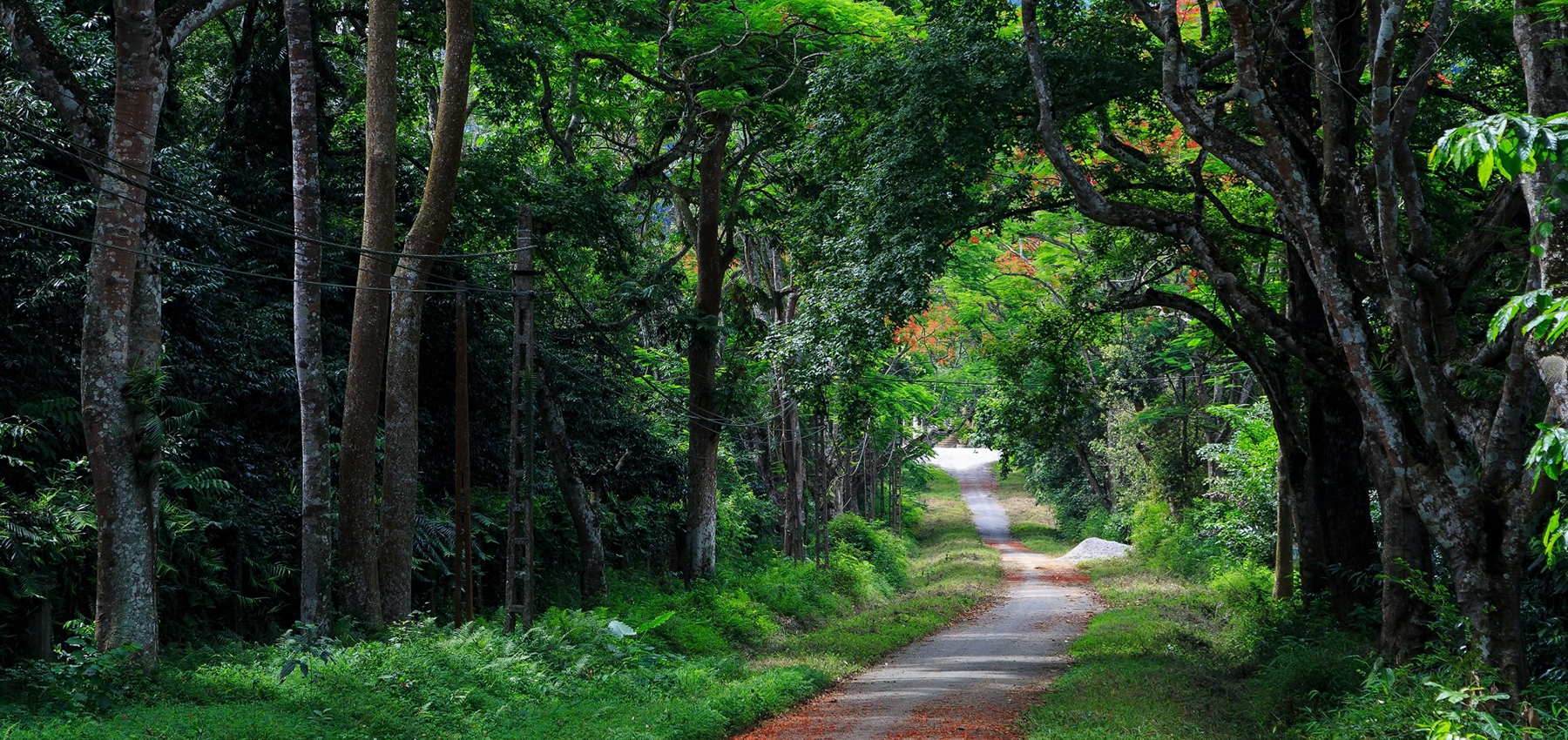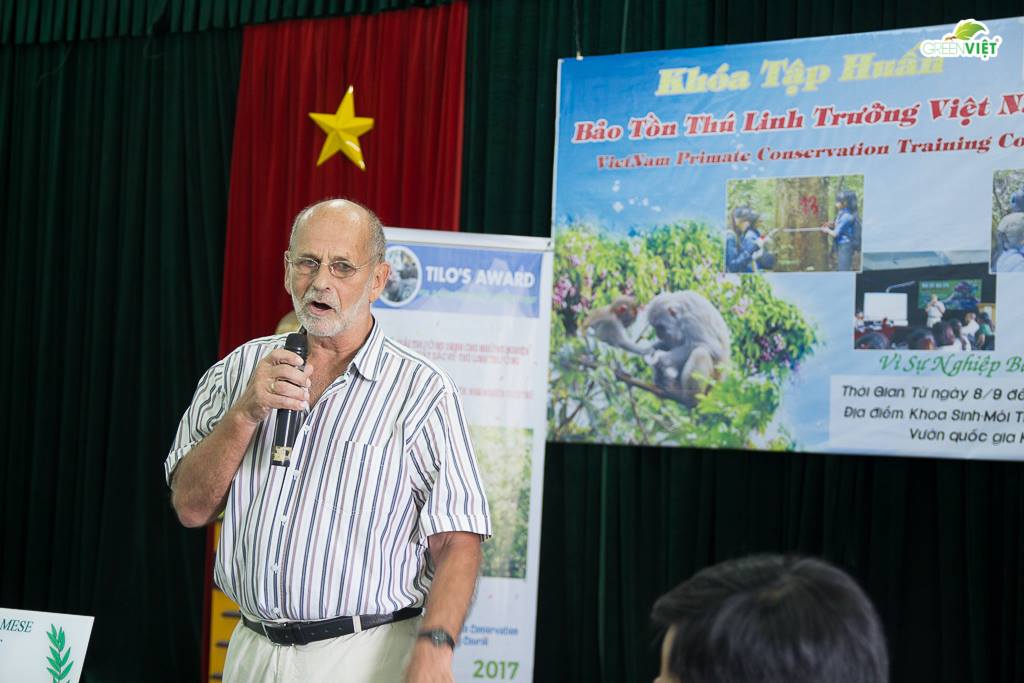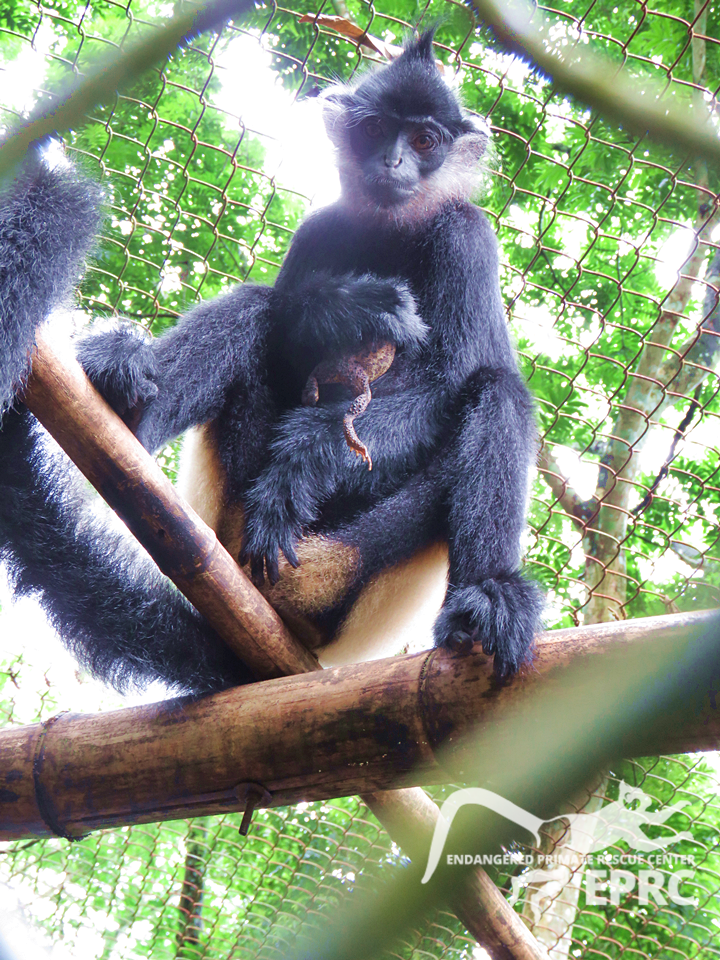

September 15, 2017• English, Learn About Vietnam's Primates
Oh hi there! Sorry for the shocking content This is an sexual organ of a male Grey-Shanked Douc Langur (Pygathrix cinerea) in its “peak”. In EPRC, we usually joke that his clock likes to indicate at exact 12 o’clock.
FACT
It is interesting that douc langurs do not only have their sexual organs erected because of mating desire. Like this photo, it was taken when we started grouping 3 grey-shanked douc langurs and the male was pretty excited (non-sexually because he hadn’t seen the females at that time yet). They also “enlarge” their p*nis in front of an enemy because they want to appear bigger in order to scare away the enemy.
This photo was posted due to agreement with most of our audience on Facebook. So please don’t report us if you find this offensive ![]() Instead, feel honored because you have a chance to see such a beautiful anatomy
Instead, feel honored because you have a chance to see such a beautiful anatomy ![]()
September 14, 2017• Behind the Scenes at EPRC, English
And Dr. Bonnie Raphael does not only stay at EPRC for 1 day, 1 week, but 3 MONTHS! She is a highly recognizable veterinarian with 20 years of experience with taking care of animals in WCS (Wildlife Conservation Society). Despite her retirement last year, Bonnie came back to EPRC to care for the health of primates at our center. Our deepest appreciation goes to you, a kind and warm-hearted woman Bonnie Raphael.
Since the day she arrived in the middle of August, she has been working tirelessly with some operations on primates at EPRC. Below are some photos from a surgery for Noisy Chi – the Indochinese Grey Langur who had a tumor on her tail.
September 12, 2017• Behind the Scenes at EPRC, English
Stick insects are favorite food of lorises. In this short video, you will have a chance to see 2 twin pygmy lorises sharing a single insect. Their names are Flip and Flop who were confiscated and hand-reared in EPRC.
Don’t forget to subscribe to our channel to see more close-up to life of Vietnam primates at EPRC!
September 11, 2017• English, News

September 10, 2017• English, Learn About Vietnam's Primates
It is truly a magic of nature when you see the orange heads of baby langurs popping out from their mothers’ black arms (in case of Hatinh langurs). All of these 5 infants were born at EPRC and now are grown-ups, healthy and strong – waiting for their possible release days in the future. The baby langurs may look alike, but if you look more closely, you will spot out some slight differences.
September 9, 2017• Behind the Scenes at EPRC, English, Photo Album

Some weeks ago, we observed a strange scene right in EPRC. CP, the Delacour’s Langur found a toad and held it for straight 2 days. She didn’t harm the toad at all, instead, was embracing it and took care of it well.
We have never seen this before, but assume that CP might be pregnant and she was preparing for her upcoming baby. However, until now, no baby has been delivered. We will keep waiting and updating for you all ![]()
September 8, 2017• English, News
Two poachers in Quang Binh province went into Phong Nha forest with their AK gun and 5 bullets and killed 4 endangered langurs.
News on Monday, August 28th, 2017 by Hoang Tao – VnExpress. The image is one of the poachers – Ai with his AK gun and the evidence.
In the morning of August 28th, the policement at Bo Trach disctrict (Quang Binh province) examined the rusted AK guns in order to clarify the case of 2 illegal poachers using guns to shoot langurs in Phong Nha – Ke Bang National Park.
September 6, 2017• English, Learn About Vietnam's Primates
Sometimes with a quick look on photos or on a quick tour, you cannot know exactly what the differences between Bengal slow loris (or Northern slow loris) and Pygmy loris are. Today EPRC will help you to become an amateur expert on these lovely animals
September 3, 2017• English, News

Our souvenir corner is a bit hidden for visitors, but it is truly a treasure trunk. There are not only witty postcards made in EPRC, propaganda T-Shirts, but also informative books about wild flora and fauna. Next time you pay a visit to EPRC, please don’t forget to drop by our souvenir corner to pick your book or T-Shirt and contribute to the process of rescuing and conserving Endangered primates in Vietnam!
September 2, 2017• English, Learn About Vietnam's Primates
Have you ever wondered how a gibbon develops? Then this infographic will show you clearly the changes along the years in gibbons development. The maximum lifespan of gibbons in the wild is 30-35 years. To those living in captivity, their age can go up 50 years but it goes with the price that they cannot enjoy the freedom in the woods.
Get to know more about the types of Gibbons at EPRC.

Established in 1993, EPRC is a not for profit project dedicated to the rescue, rehabilitation, breeding, research and conservation of Vietnam’s endangered and critically endangered primate species.
© Endangered Primate Rescue Center 2020
Website by MINIMUMMEANS